How to Understand the New IPCC Report: Part 1, Scenarios
Contrary to what you've been reading, the massive new IPCC report offers grounds for optimism on climate science and policy
The new IPCC report dropped yesterday, prompting a flurry of interpretations and, yes, spin. The Secretary General of the United Nations warned of,
“a code red for humanity. The alarm bells are deafening, and the evidence is irrefutable: greenhouse‑gas emissions from fossil-fuel burning and deforestation are choking our planet and putting billions of people at immediate risk.”
Not only is this wrong, it is irresponsible. Nowhere does the IPCC report say that billions of people are at immediate risk.
Here instead I will offer a more accurate interpretation of the new IPCC report by taking you through what I believe to be some of its most important aspects, in my areas of expertise. IPCC reports are massive efforts and the contributions of hundreds of scientists and their collaborators should be applauded. If the IPCC did not exist we’d have to invent it. It is so important that it is worthy of critique by independent experts.
Before proceeding, let me tell you who I am. I am an undisciplined professor who studies science, policy and politics. I have studied climate science and policy since the early 1990s when I wrote a PhD dissertation on how climate science could support climate policy, which was important then and is still important today. I am among the world’s most cited experts on disasters and climate change and my work on climate scenarios is cited in the current report. I’m not involved in the IPCC — actually, about a decade ago I was nominated by a federal agency to serve on the IPCC SREX report, and a US government official told me, “You will never participate in the IPCC.” Prophetic. But that means I can give an independent view. Let’s go.
The IPCC projects “plausible” futures by using scenarios. Scenario planning dates to the 1960s and is incredibly useful for long-term challenges like climate change. Understanding scenarios can be highly confusing because they are used in very different ways. One way is to explore a wide range of plausible futures, without predicting or projecting the most likely path ahead. Another way is to actually project where the world is headed and use that projection as the basis for evaluating alternative policy options that deviate from that path. Over the past 30 years the IPCC has bounced back and forth between these two perspectives, adding to potential confusion.
The current IPCC report is notable because it has stated that among the 5 “illustrative” scenarios that it emphasizes, it assigns no likelihood to any of them.
That is important because it represents a 180-degree turn from the previous IPCC assessment, which identified one scenario as most likely, called a “reference scenario.” Because the 2021 IPCC has decline to attach a likelihood to its scenarios, that means that in order to properly interpret the new IPCC report, you and I have to assess the likelihoods of different scenarios.
That’s a big ask. But you are in luck because I and my colleagues have spent years studying the plausibility of IPCC scenarios. Our peer-reviewed work, along with other relevant studies, put us in a very good position to help you to understand the significance of scenarios in the current report.
Much to its credit (and seemingly at odds with its claim to assign no likelihoods to scenarios), the IPCC has concluded — just as we have in our research — that several of its scenarios are of low likelihood. This is very good news because these implausible scenarios are the report’s most extreme scenarios.
For my technical readers, the scenarios judged unlikely by the IPCC are high emission (“such as RCP8.5 or SSP5-8.5”) and the scenarios “in line” with current policies are intermediate scenarios (“RCP4.5, RCP6.0 and SSP2-4.5”).
This is huge news. Fantastic in fact. Why? The extreme scenario RCP8.5 was in the most recent IPCC report identified as our most likely future. Now IPCC has completely reversed that, and it is now considered low likelihood. There could not be a more profound change in the scenario foundation of climate science.
Instead of apocalyptic warnings about “immediate risk” a top line message of this report should be: Great News! The Extreme Scenario that IPCC Saw as Most Likely in 2013 is Now Judged Low Likelihood. I am actually floored that this incredible change in such a short time apparently hasn’t even been noticed, much less broadcast around the world.
For its part, the IPCC claims to be “neutral” with respect to scenario assumptions, despite also, seemingly contradictorily, identifying certain scenarios as low likelihood and others more in line with current policies. Here is where the IPCC gets into some trouble.
Despite acknowledging the low likelihood of the most extreme scenarios RCP8.5 and SSP5-8.5, which were the dominant focus of the 2013 IPCC report, the extreme scenarios dominate the current report as well. This is obvious from the table below which shows the number of mentions of various scenarios in the new report.
The extreme scenarios RCP8.5 and SSP5-8.5 account for more than 40% of all scenario mentions across the 3,000+ page report. Add in the extreme scenario SSP3-7.0 and the total gets to over 50%.
The phrase “extreme scenario” might be a little difficult to understand in the abstract. So let me explain what an extreme scenario looks like, and why it is obviously, undeniably implausible. All of RCP8.5, SSP5-8.5 and SSP3-7.0 assume that the world is going to massively increase consumption of coal in the future. The scenarios project that we will replace natural gas with coal, we will replace nuclear with coal, we will replace wind and solar, we will even chose to abandon gasoline for cars and use coal-to-liquid as fuel. If that sound ridiculous — it is!
The figure below, (from my colleague Justin Ritchie) shows the near-term assumptions of coal use across these three extreme scenarios. The two lines labelled IEA WEO 2019 show about where the world is in 2021 for actual coal demand — already well below these scenarios, a gap which is going to increase massively by 2050 and by much more by 2100.
Consider that SSP5-8.5 projects a 6.2x increase in per capita coal consumption by 2100, as shown in the figure below. No one believes that coal consumption is going to increase to 2100, much less double, triple or sextuple. The orange and blue downward-sloping lines at the bottom indicate where the world is actually heading. No wonder the IPCC judged these scenarios low likelihood.
What this means is that while these extreme scenarios might be useful for exploratory research in climate modeling — for instance, to help distinguish a greenhouse gas forced signal from variability, or fanciful scenarios — akin to exploring what happens if the earth is hit by a big asteroid, they should not be used to project plausible futures. They simply are already implausible.
I understand that old flames can be difficult to let go of, especially when there was a long and deep relationship. That is the case here as well. Looking at all scenario mentions in the current IPCC, actually none of the five “illustrative” scenarios are most discussed in the report. The most discussed scenario is actually RCP8.5, which was also the most mentioned in the 2013 IPCC report.
In fact, the proportion of references to extreme, low likelihood (IPCC words), implausible (our word) scenarios has increased from the 2013 to the 2021 report. In the 2013 report the most extreme scenario represented about 30% of mentions, and in 2021 that jumped to over 40%. Why is the IPCC spending so much time on a scenario judged unlikely and so little time on a scenario judged in line with current policies? This hasn’t been explained.
The result is a report that appears to have an apocalypse bias. There are good reasons why this emphasis happened, which go beyond this column. For those looking to learn more I encourage you to read this paper, written for a general audience and for a deeper dive, this paper written for those wanting more technical details.
To close this part 1, let me emphasize that climate change is real and important. Aggressive adaptation and mitigation policies make good sense, as I’ve argued for 25+ years. It is the significance of climate change that makes it so very important to get the science right in policy discussions. Science is not simply an impressionistic backdrop for political advocacy — it matters also for the details of policies that will profoundly affect peoples lives.
The lessons of scenarios in the IPCC are a case study in the complex dynamics where science and politics meet — and not simply or even primarily climate politics, but the politics of expertise, of institutional and intellectual lock-in, of closed communities, and more. One day PhD dissertations will be written on how the IPCC got off track in its use of scenarios. But for now, we will have to make sense of it on our own.
Part 2 will take a close look at the IPCC conclusions on trends in extreme events like heat waves and storms. Here, the IPCC overall did a very good job. The media, politicians and advocates? Not so much. Stay tuned!

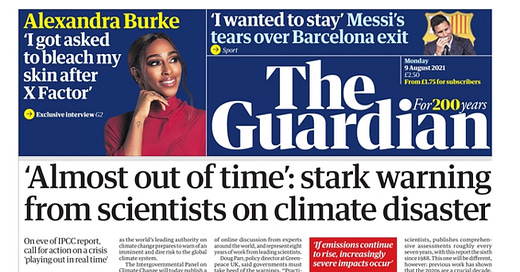




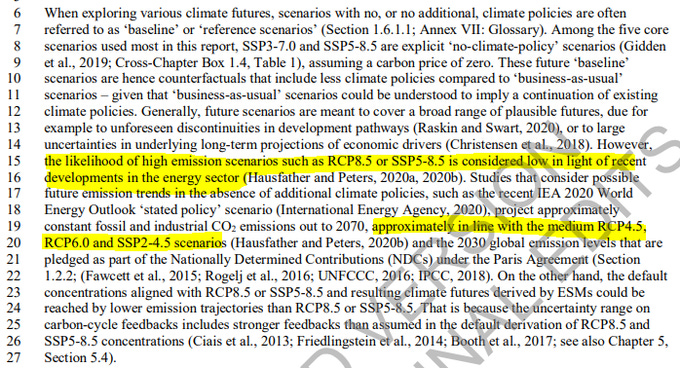
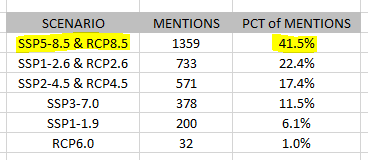
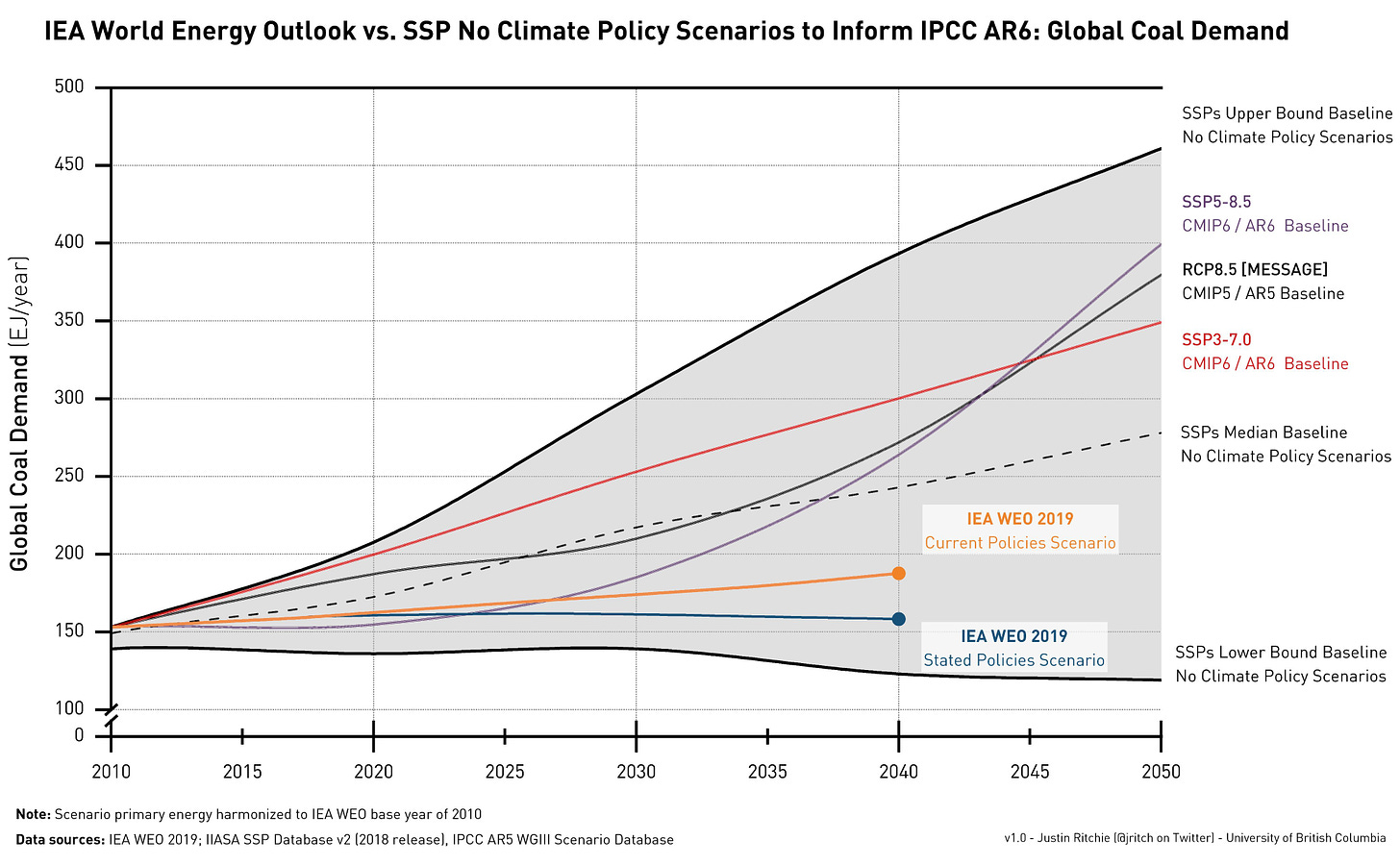
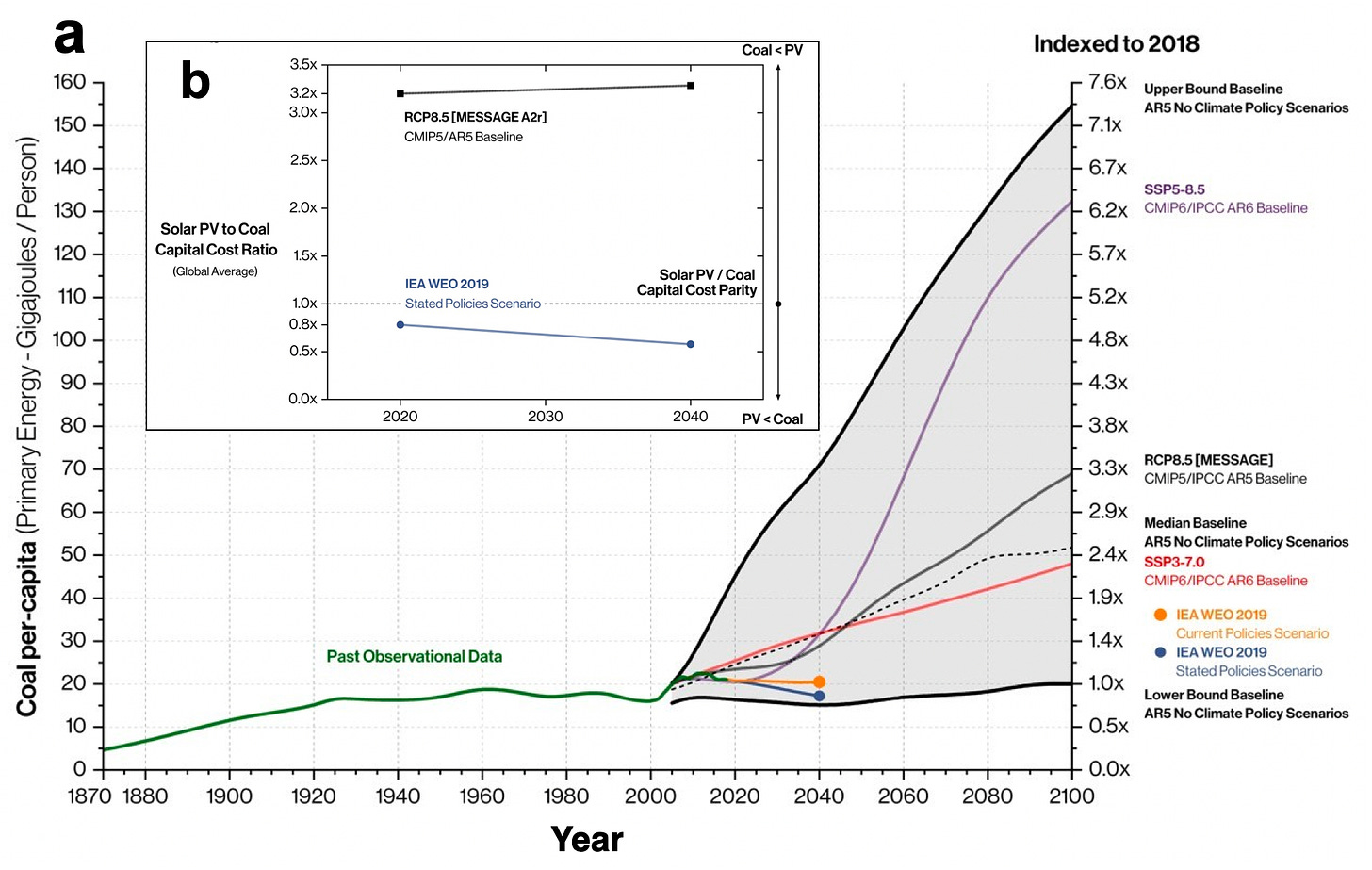
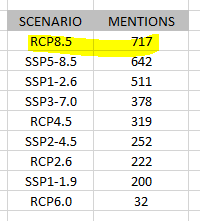
I think I read IPCC SREX (2012) on extreme events because of something you wrote - perhaps it was the time of "the terror" among the climate faithful when you were appointed as the climate writer for 538. A briefly held position, but educational for many reasons.
It's been bizarre ever since to read the certainty by the media and politicians that droughts, floods and storms are getting worse.
When I explain to the (small group of) people I know that the IPCC report said something completely different they nod in interest. Once more than a few weeks has passed, if the subject of climate comes up, they usually comment that I "don't believe climate scientists", or "don't believe in climate change".
Perhaps a fascinating study in human psychology - "propaganda only happens to other people" - but I appreciate you putting the effort in and making yourself likely unemployable at any other academic establishment from your current one as a result.
Transparency and honesty about what the science really says is core to our future. It is regrettable that the media have lost interest in understanding reality and truth in favour of headlines that sell well.